Afrikakorps Heer Pith Helmet (2nd version)
CATEGORY: Version
SKU: 23.GOR.01.02.02.001.001
Estimated market value:
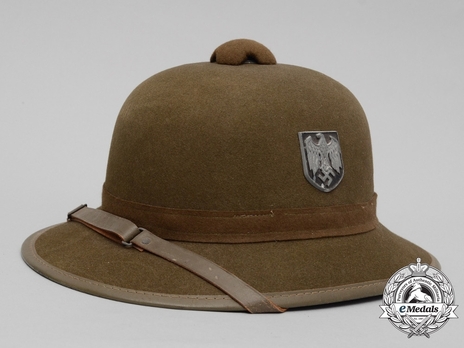
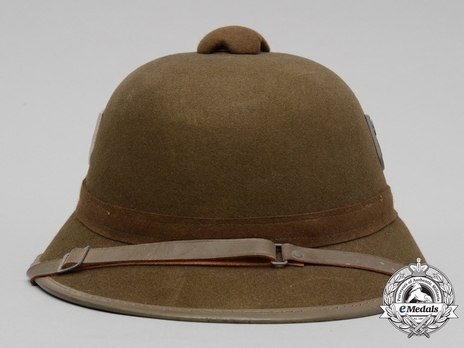
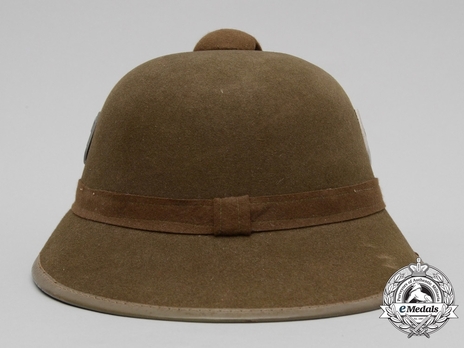
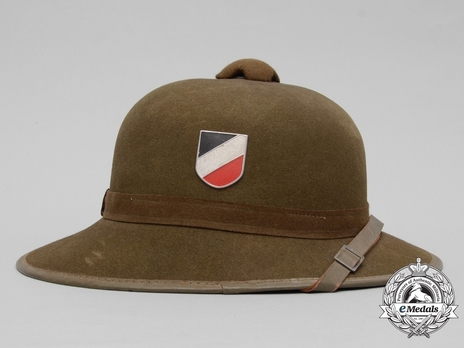
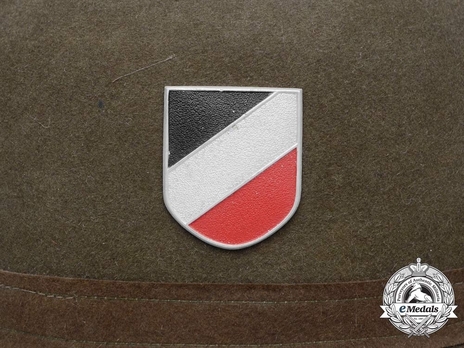
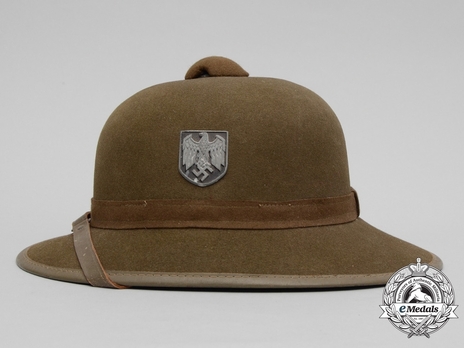
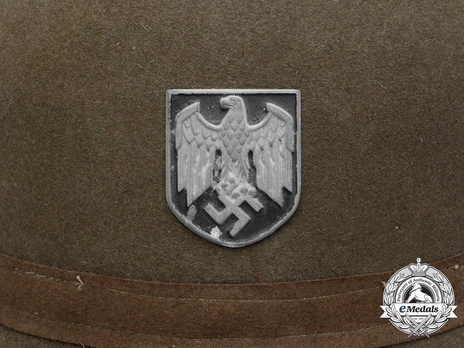
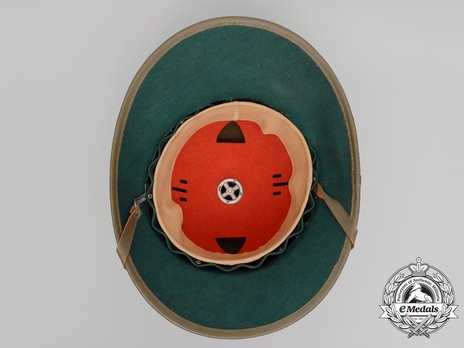
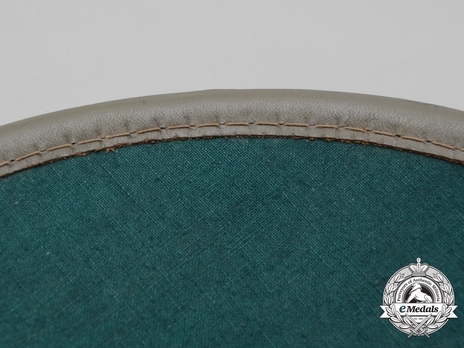
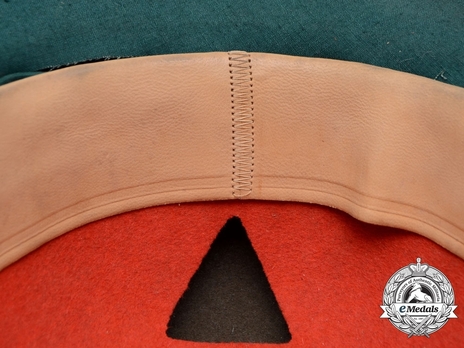
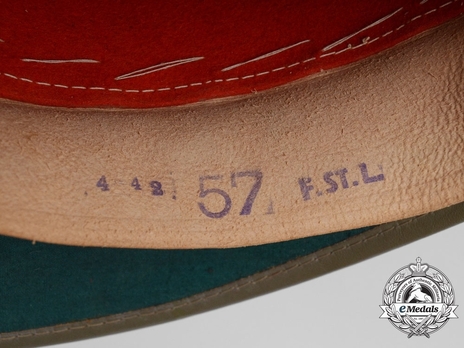
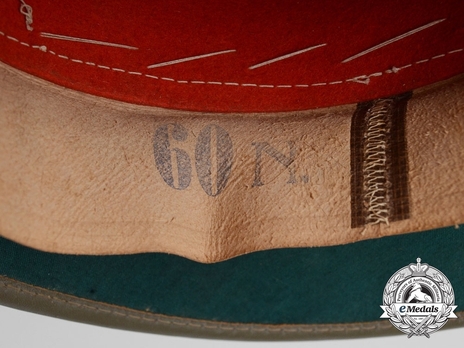
Estimated market value:
A second pattern 1942, size 57, Wehrmacht Afrika Korps pith helmet; solid construction with green felt exterior and red felt interior with air vents; air vent finial; zinc tri-colour shield on right side and shield of a German eagle clutching a swastika on left side; olive green leather band trim surrounding the edge of helmet with matching olive green leather chin strap; tan leather sweatband unmarked on the outside but marked “60 N”, “4-42”, and ”57 F.ST.L” on the inside of sweatband; interior held in place with cotter pins; better than extremely fine condition.
During the Second World War, German troops stationed in northern Africa are generally referred to as the Afrikakorps. Technically, this is not entirely correct, since some German units operating in Africa were not actually part of the DAK (Deutsches Afrikakorps), and some units of it were, in fact, Italian ones. However, for the purpose of collecting so-called “tropical” uniforms and insignia, collectors have simplified the meaning of the term.
The first German troops were sent to northern Africa in February of 1941, to support their Italian allies against the British. The climate of the African continent made it necessary to wear specialised uniforms and gear that not only supported the soldiers in serving in a hot and arid environment, but also helped them in blending in with the landscape, which, in general, presented itself as brown, olive, khaki, or sand/tan in colour. Worn over long periods of time under the blistering desert sun, some uniforms were eventually bleached to white or off-white. Uniforms and insignia in these colours are often referred to as “tropical”, and it is worth noting that they weren’t just worn by members of units stationed in Africa, but in the entire Mediterranean theatre of war, including southern France, Italy, the Balkans, and Greece, as well as in southern Russia during the summer months. Tropical uniforms were worn by members of all three branches of the Wehrmacht: the Heer (army), the Kriegsmarine (navy), and the Luftwaffe (air force). Members of the Waffen-SS stationed in southerly regions also wore tropical-style uniforms, and even though they technically have no connection to the DAK, all tropical uniforms and insignia of all branches of the German military are listed here.
The helmet of the Army became one of the most recognisable items of the German soldier in the Second World War, just like the “Pickelhaube”, the spiked helmet, had come to be a symbol associated with the German Imperial Army. However, where the spiked helmet fulfilled more of a ceremonial function, the steel helmet was intended as a practical item for the battlefield, designed to protect and shield its wearer from grenade splinters and other forms of shrapnel.
Helmets will vary in appearance due to production by different factories and subcontractors, and changes in specifications.
The Pith Helmet had been developed for tropical regions and was in use since the days of colonialism. Its main feature was that it was significantly more light in weight than a regular helmet. During the Second World War it was worn by enlisted men and officers of all ranks.
It has a pressed cork body. There are also rarer versions made of wicker or straw. It usually has a leather sweatband and a leather chinstrap. On this helmet the tricoloured and eagle shield decals weren’t painted versions, like on the steel helmets, but badges pinned to the helmet.
There are two versions of the pith helmet. The first version is covered with a lightweight canvas which is either green or tan in colour. The dome is covered by six pieces of cloth sewn together, with a cloth band at the base to cover the sewn junction.
The second version instead has a one-piece seamless cover made of felt.

Comments
Sign in to comment and reply.


Scroll Top